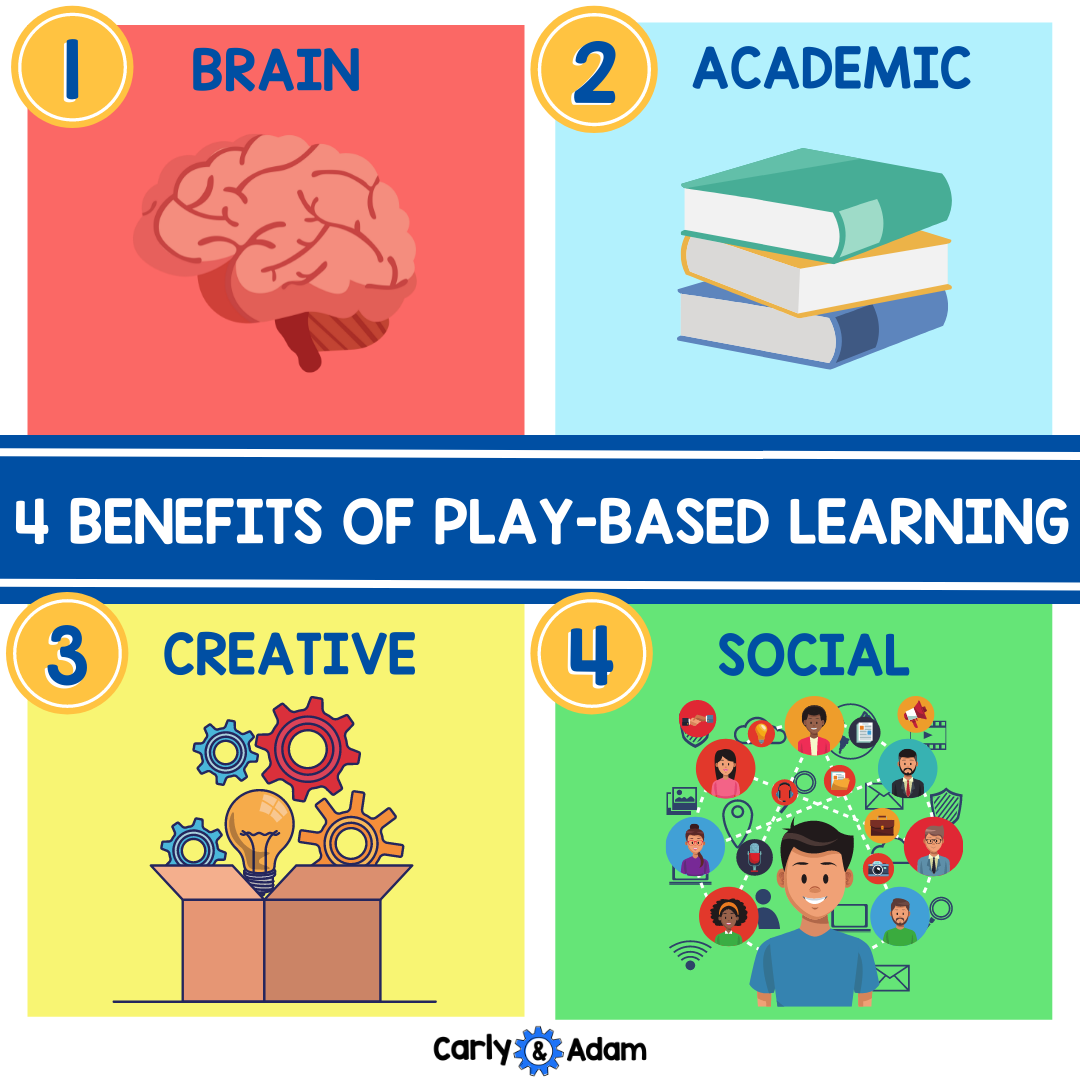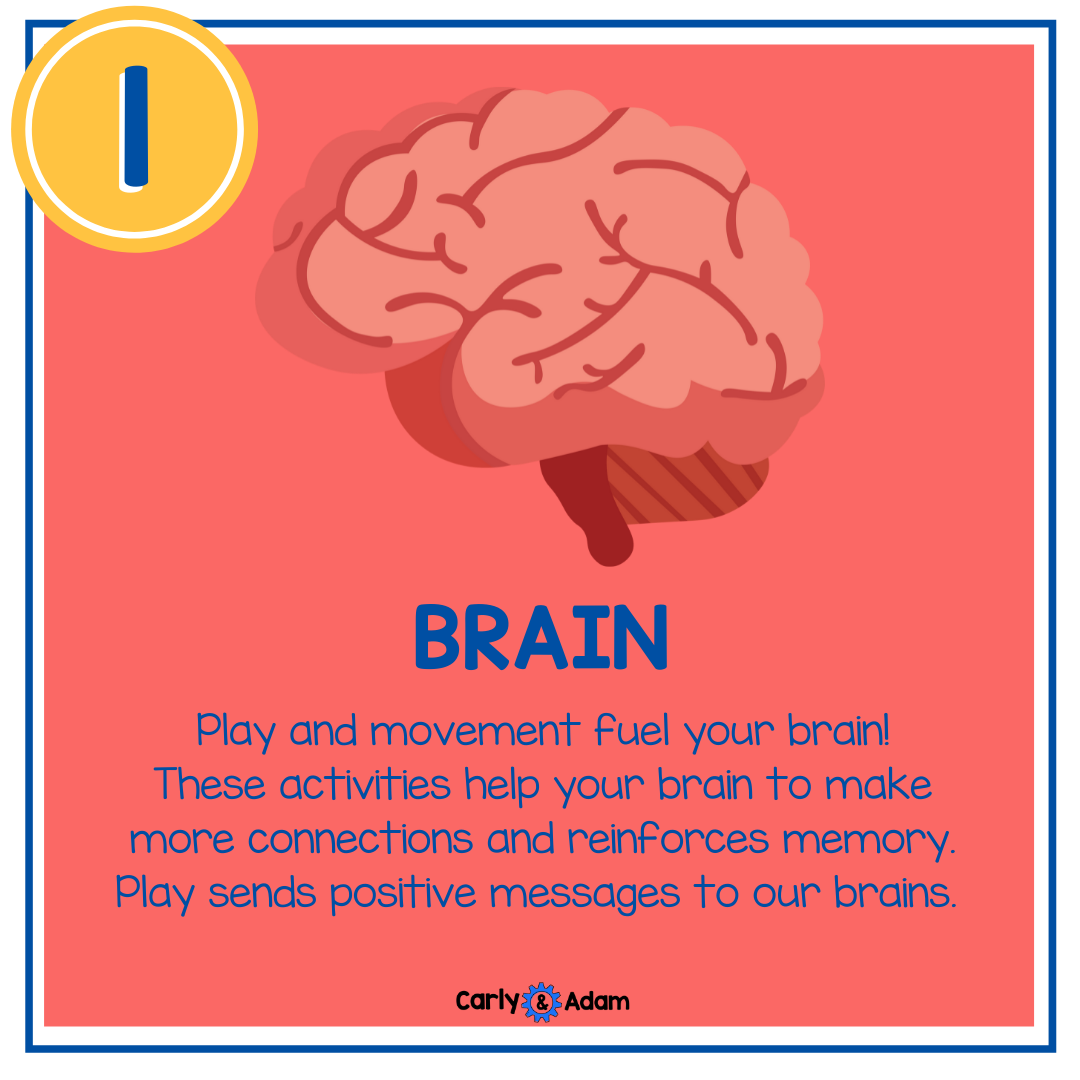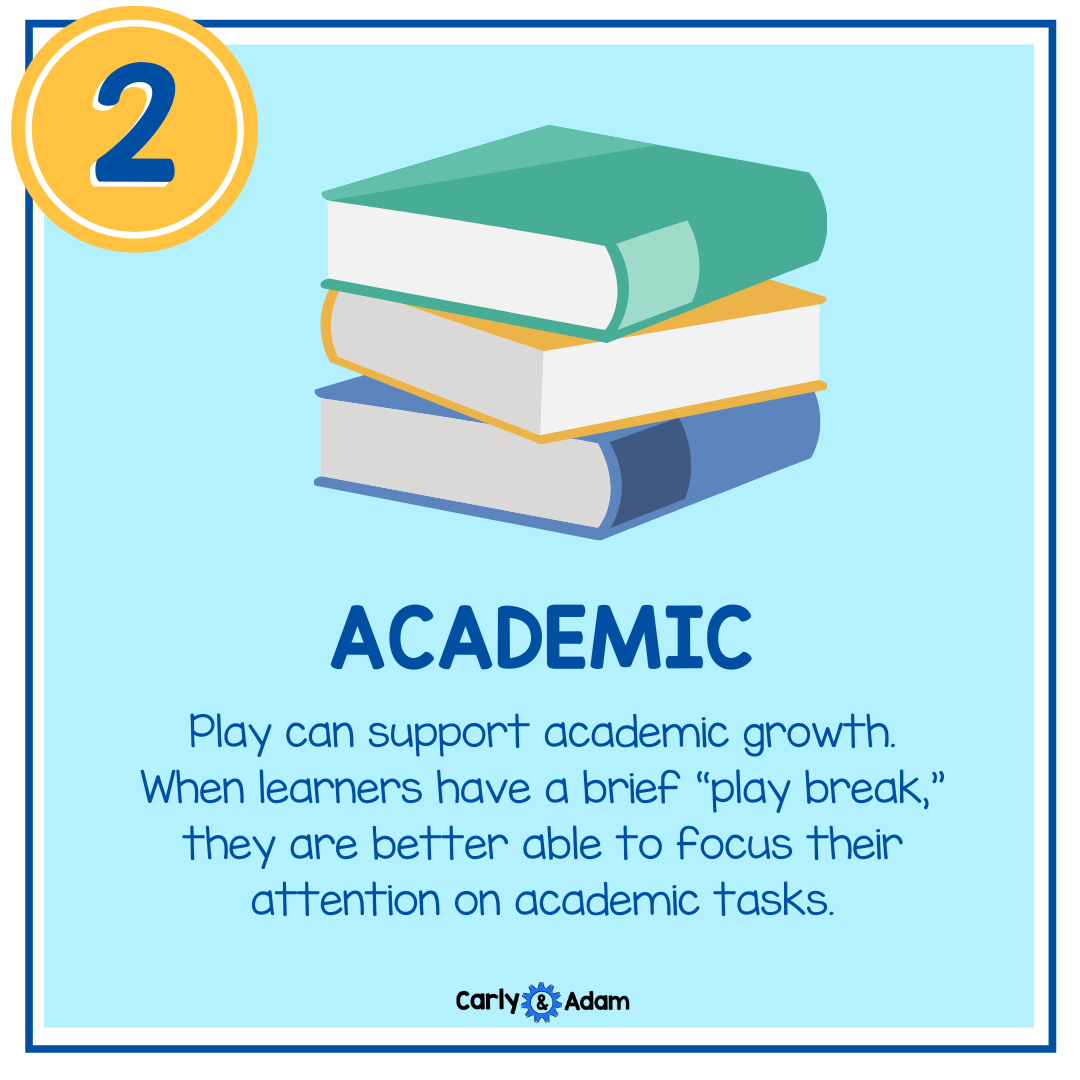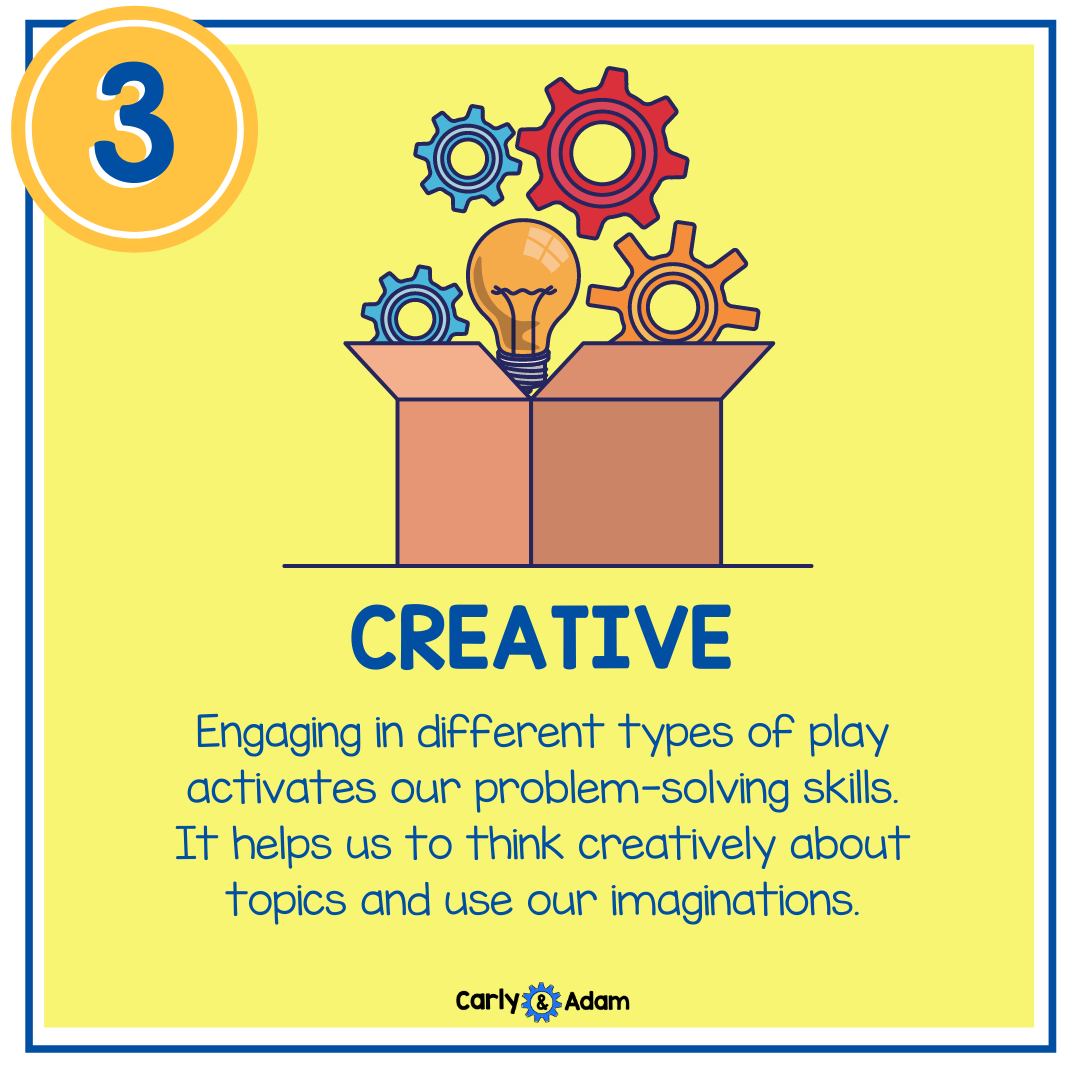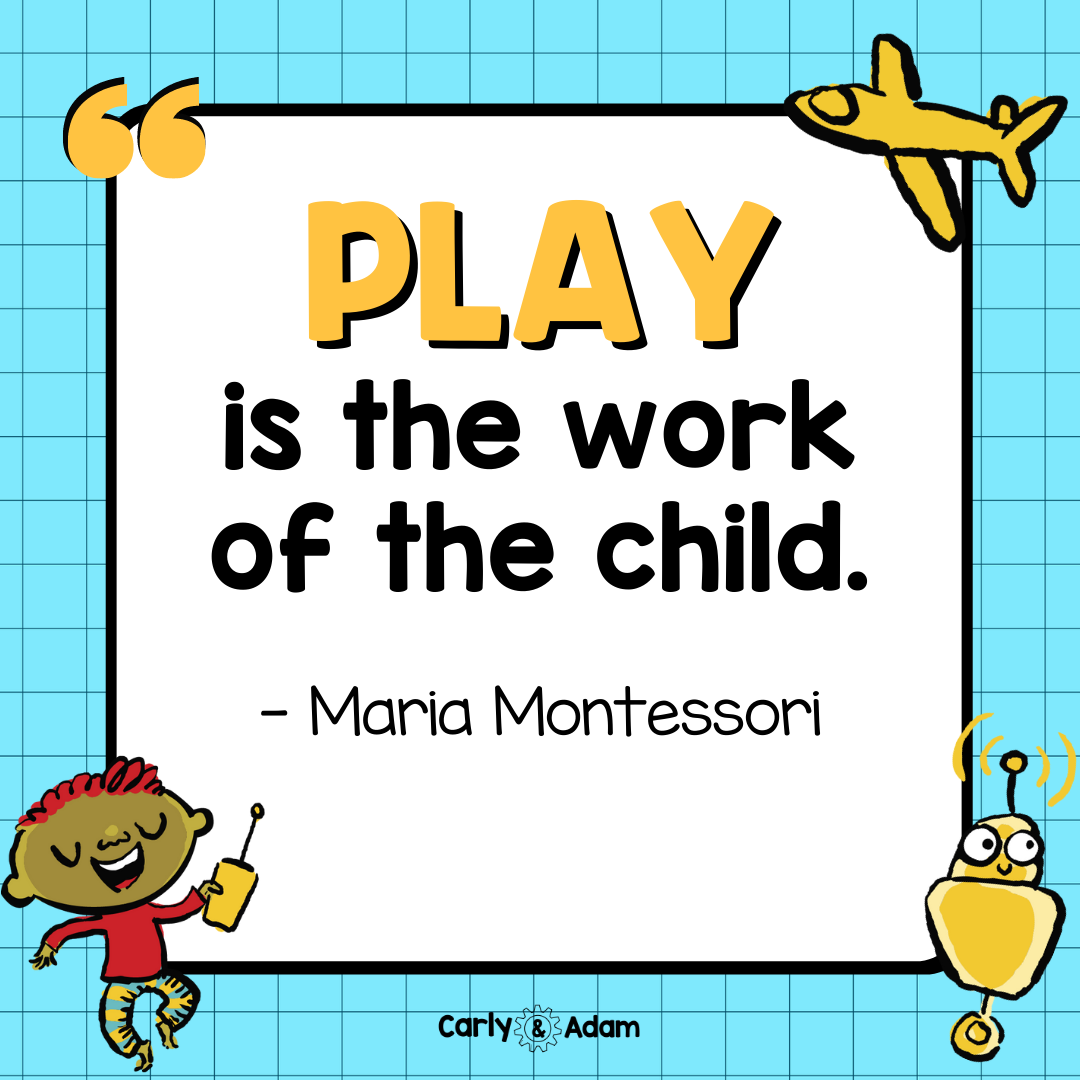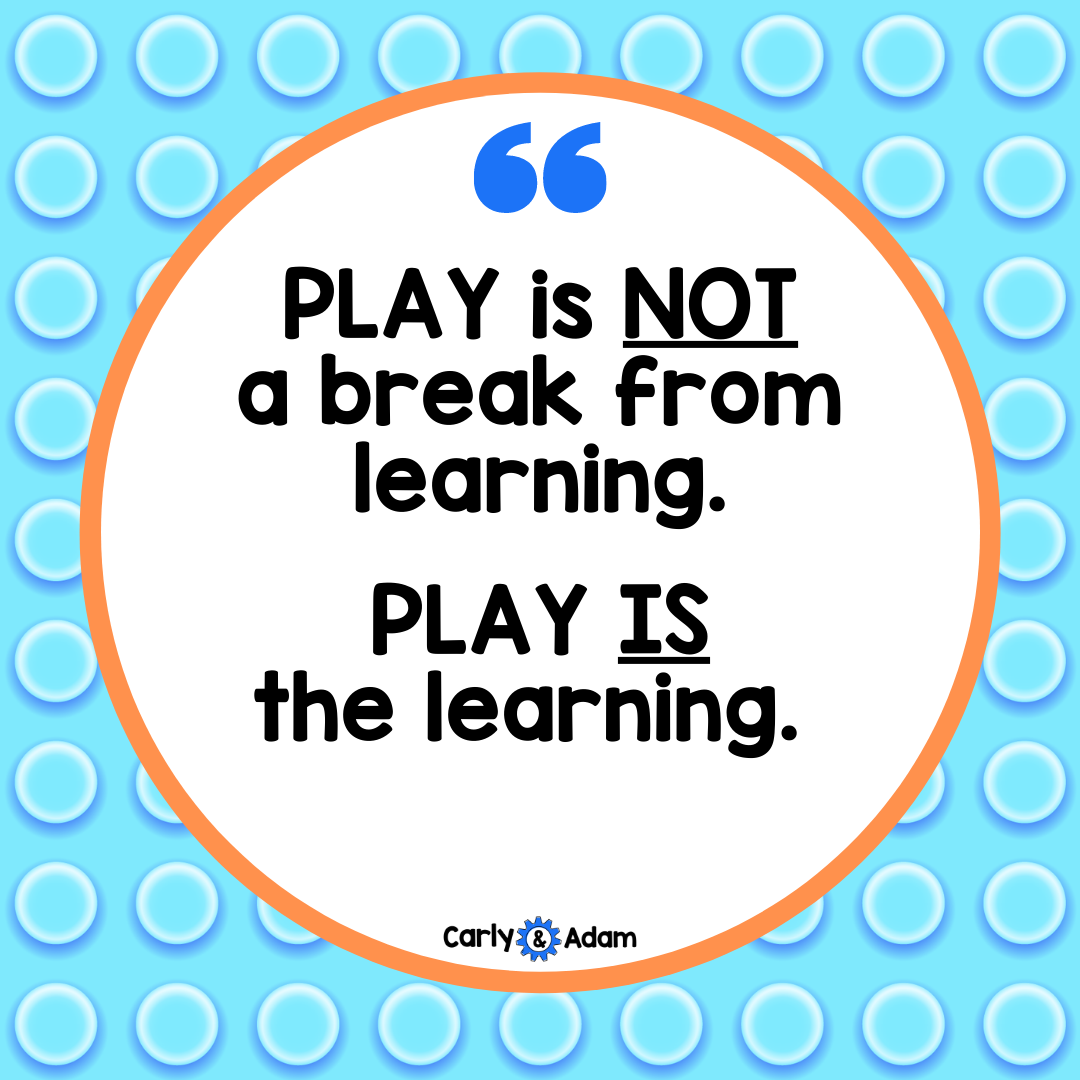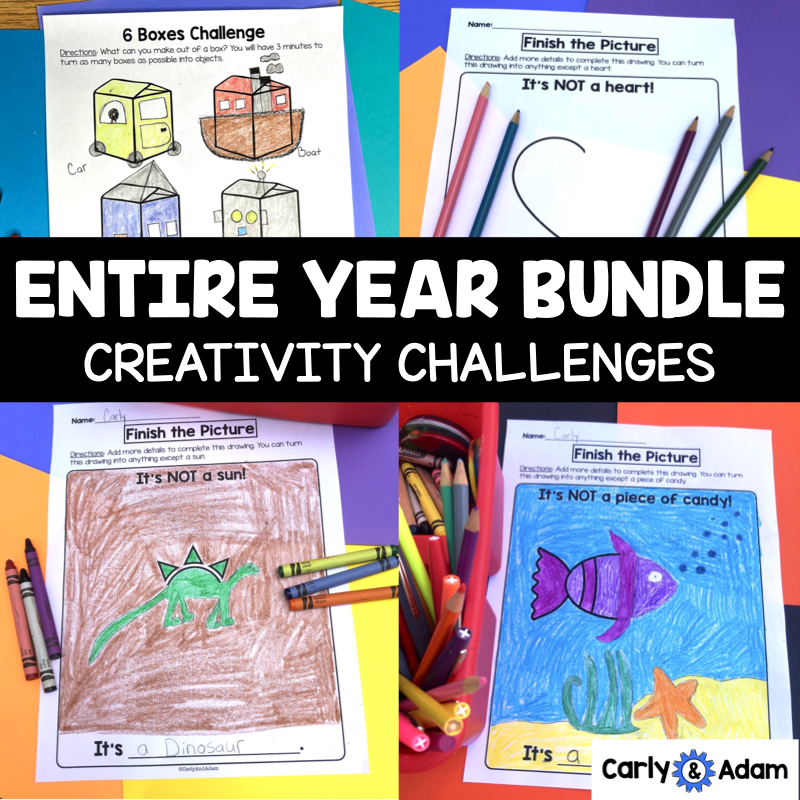4 Benefits of Play-Based STEM Learning
The following is a guest post from Dr. Jacie Maslyk.
There are many benefits of play for children, both at school and at home. When we are very young, play is the way we learn about new things. It is a time to use our hands, our minds, and our voices to explore the things around us. Play can positively impact our brain, our academic growth, as well as our creative and social development.
1. Brain
Play and movement fuel your brain! These activities help your brain to make more connections and reinforces memory. Play sends positive messages to our brain. When your brain is fueled you may have increased energy and even be in a better mood. When learners engage in play, they use their senses which allows them to process different types of information. This processing also helps learners in their academic and social development.
2. Academic
Play can support academic growth. When learners have a brief “play break”, they are better able to focus their attention on academic tasks. Engaging in pretend play like drama and role play helps to build language skills. When learners navigate play with others, they engage in conversation and share their ideas. Play experiences help learners to take risks and make mistakes that are low stakes, helping them to persevere and grow.
3. Creative
Engaging in different types of play activates our problem-solving skills. It helps us to think creatively about topics and use our imaginations. When our imaginative thinking is fostered, we build stronger empathy and understanding towards others. This not only makes us feel more creative, but it also builds relationships with others.
4. Social
Play, especially free play, supports social development in young people. When they engage in play, it helps to build communication skills, turn-taking, decision-making, and positive social skills. Socializing with peers and engaging in play supports the social emotional development of our students. Play can also build independence, helping learners to develop their own ideas in a positive way.
Is STEM play-based learning?
STEM learning doesn’t have to feel like serious learning. STEM is discovery, tinkering, creating, experimenting, and building. It can be creative, iterative, challenging, and playful, all at the same time. We can provide opportunities for students to use tools that inspire play. While the learning experiences that we design may be playful, there is meaningful learning happening. Take a look at these examples:
Two students are ”playing” with an electric circuits kit, trying to get a sensor to trigger a buzzer. They are sharing ideas and making decisions together.
The learning behind it:
Properties of electricity
The difference between open and closed circuits
Series vs. parallel circuits
A group of kindergarten students are “playing” during free choice time. They are using building bricks on the floor together to construct a castle.
The learning behind it:
Categorization of colors, shapes, and sizes
Sharing, turn-taking, and communicating
Building strong structures
A student is “playing around” making a video using an iPad.
The learning behind it:
Using media to communicate an idea
Adding background images or sound effects to enhance the video
Adjusting sound and lighting to create a quality product
While these scenarios are different, each one represents something that students view as play. Yet all of these playful examples have a learning outcome (whether intended or not.) STEM learning experiences can look a lot like play, but we can create meaningful connections to show students that their play is helping them to learn and grow.
How does STEM and play fit together?
STEM aligns well with play and shares many of the same benefits. When learners engage in STEM, their work is social as they collaborate on design challenges and get feedback from one another. STEM learning is creative, as students think outside the box to solve problems. The integration of science, technology, engineering, and math is certainly academic as it connects important content areas in hands-on ways that allow students to apply what they are learning. When STEM learning aligns with play in creative and collaborative ways, learners will experience many of the same benefits.
Play in the Classroom
The late Fred Rogers is often credited with saying, “Play is often talked about as if it were a relief from serious learning. But for children play is serious learning. Play is really the work of childhood.” If play is the “real work” then shouldn’t we be striving to make our classroom instruction more playful?
STEM aligns well with play, although it isn’t made up of solely play. Effective STEM instruction is grounded in content knowledge and the interconnected nature of science, technology, engineering, and math. When it is approached in a way that is engaging, collaborative, and fun, STEM evokes a sense of playfulness. Whether constructing with cardboard or creating with play dough, we can help all students to access STEM learning when we offer playful opportunities to engage in the learning.
Looking for more resources for play-based learning? These creativity challenges are just one more way to promote out-of-the-box thinking and encourage imagination in our students.
Have more questions or need additional resources?
Join our Free Facebook Group.
For more STEM ideas, inspiration, and collaboration with other STEM teachers be sure to join our FREE Facebook group Elementary STEM Teachers with Carly and Adam!
We hope you have found this blog post helpful. To stay connected with Carly and Adam's teaching tips and classroom freebies be sure to follow us on Facebook, Pinterest, Teachers Pay Teachers, and subscribe to our blog!
An educator for the last 23 years, Dr. Jacie Maslyk, has served as a classroom teacher, reading specialist, elementary principal, and assistant superintendent. She is the author of STEAM Makers: Fostering Creativity and Innovation in the Elementary Classroom, Connect to Lead: Power Up Your Learning Network to Move Your School Forward (ISTE), Remaking Literacy: Innovative Instructional Strategies for Maker Learning and Unlock Creativity: Opening a World of Imagination With Your Students. You can read more on her blog, Creativity in the Making, at www.jaciemaslyk.blogspot.com. Connect with Jacie on Twitter @DrJacieMaslyk or email her at jaciemaslyk@gmail.com .

